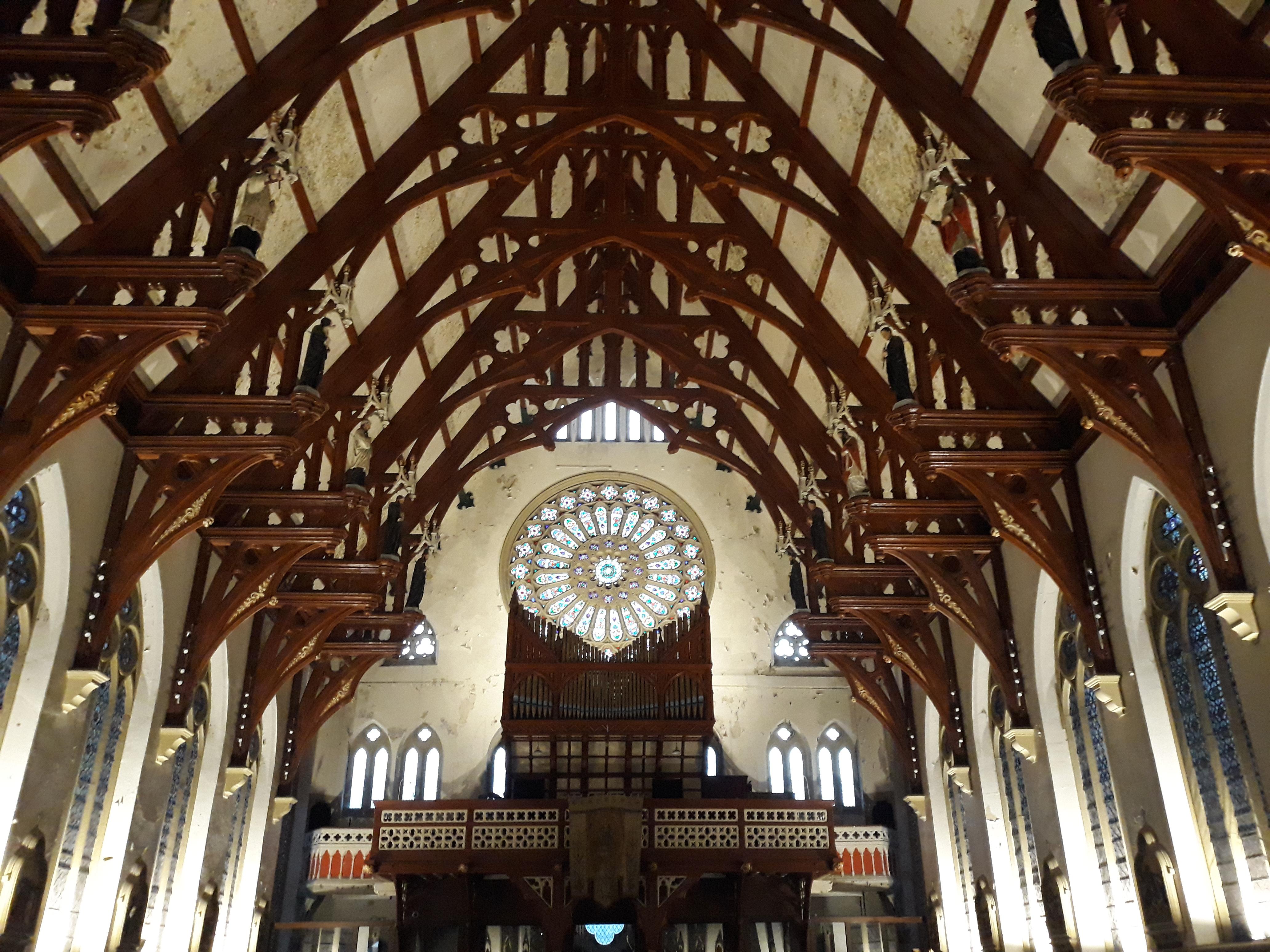Elena Curti, author of the book '50 Catholic Churches To See Before You Die' writes about St Walburge, Preston, the church with the tallest spire of any parish church in England, which we helped with a £10,000 Cornerstone Grant in March 2022.
Here is a slice of Catholic history brought back to life. This extraordinary church is now treasured and cared for, just as it was in its Victorian heyday. Visitors are welcomed with open arms.
I wrote many stories about St Walburge’s for The Tablet during the years it was under threat. I knew it had the tallest spire of any parish church in England soaring to 309 feet, an immense steeply-pitched timber roof and, rather crazily, statues of 25 saints standing on the ends of the hammer-beams. Most of all, I remembered that it was Grade I listed and J. A. Hansom’s most ambitious endeavour.
The Jesuits who built the church, handed it over to the Diocese of Lancaster in 1955. By 2007 it was earmarked for closure, alongside a number of other churches in Preston. Then a traditional Catholic group, the Institute of Christ the King, offered to take it on, and in 2014 Bishop Michael Campbell placed it in their care. It became a shrine church, dedicated to celebrating the Tridentine Mass.
Cotton made Preston prosperous in the nineteenth century. St Walburge’s early congregations included old Catholic families, but chiefly comprised Irish migrants who worked in the mills. Eight thousand of them undertook to pay £1 a year for its construction. Cotton bales were placed in the foundations under the steeple to minimise vibration and protect the structure.
Hammer-beam roof
Hansom modelled his hammer-beam roof on Westminster Hall and experimented with a prototype in the temporary church and school he designed for the building next door (now the Talbot Library). The steeple is of white limestone and contrasts with the brown sandstone of the main church. The rose window on the west front is 22 feet in diameter – bigger than that at York Minster.
More marvels await inside, including a pulpit with a graceful staircase built into the wall. There is a huge war memorial, designed as a triptych, with a fifteenth-century rood salvaged from a French abbey destroyed in the Great War. The names of ‘the pals’ – members of the Royal Lancashire Regiment who perished in France – are inscribed beneath.
The polygonal apse, added in 1874, is by S. J. Nicholl. The east window depicts the Crucifixion and various saints. To the left, near the bottom, a bearded figure clad in red, holding an architect’s compass, is believed to be Hansom.
European Gothic
The sense of space in such a vast building with no supporting columns is awe-inspiring. Pevsner called the roof ‘a bad dream’, but it belongs to a time when Catholics could be forgiven a little pomp. More importantly, it is a leading example of the unique Catholic style that brought together north European Gothic and Italianate features. Hence the Gothic pointed arches, the steeple and the rose window combined with the Roman model of a broad, open chancel with clear views of the high altar.
St Walburge (710 –777 or 779) was an Anglo-Saxon nun who joined St Boniface’s mission to Germany. The church is dedicated to her because the Jesuits’ housekeeper was cured of a serious illness after being treated with St Walburge’s oil, a substance said to seep from her tomb in Eichstätt, Bavaria. A tiny phial containing the oil has pride of place in the Lady Chapel, together with a statue of the saint.
The church’s survival does indeed seem a miracle. The Institute offers guided tours, and the opportunity to climb the tower. In the past few years, peregrine falcons have nested, which restricts access while they are tending their young.
St Walburge is at Weston Street, Preston PR2 2QE - Phone: 01772 739367
'50 Catholic Churches To See Before You Die' is published by Gracewing Books.

